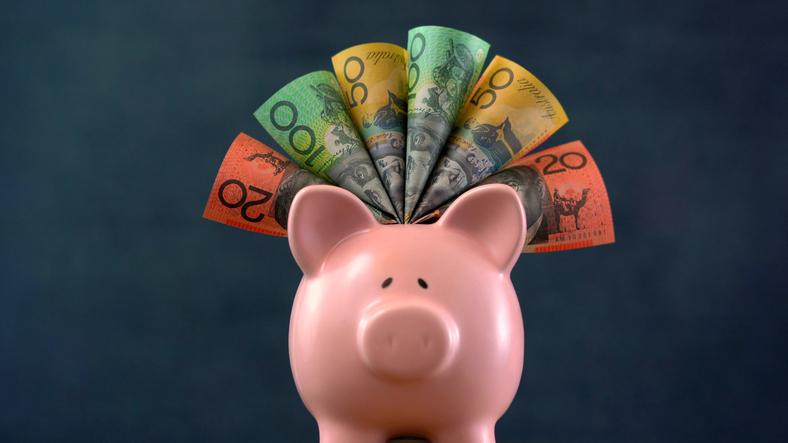Australia, the world’s sixth-largest country by land area, is renowned for its diverse landscapes, vibrant cities, and rich cultural heritage. With a population of approximately 26 million, it boasts a stable economy characterized by strong resource exports, including iron ore and coal. The country operates under a market-based economy and has a robust financial system, supported by a well-regulated banking sector and a strong legal framework. Australia is also a significant player in the global trade arena, exporting goods and services to countries around the globe, particularly China, Japan, and the United States.

The Australian economy is influenced by various factors, including domestic and international economic conditions, commodity prices, and monetary policy. One critical aspect of its economic framework is the relationship between exchange rates and interest rates, which plays a crucial role in shaping economic outcomes. As a country that relies heavily on international trade, fluctuations in the Australian dollar (AUD) against other currencies can significantly impact import and export prices, inflation, and overall economic growth. Understanding this relationship is essential for investors, policymakers, and businesses operating in Australia and beyond.
Understanding Exchange Rates and Interest Rates
At the heart of this exploration is the interplay between exchange rates and interest rates. Exchange rates refer to the value of one currency compared to another, while interest rates represent the cost of borrowing money or the return on savings, often set by a country’s central bank. In Australia, the Reserve Bank of Australia (RBA) is responsible for determining the official cash rate, which influences lending and borrowing rates across the economy. Changes in interest rates can lead to immediate reactions in the foreign exchange market, affecting the value of the Australian dollar.
When interest rates rise, the AUD typically appreciates relative to other currencies. Higher interest rates offer better returns on investments denominated in AUD, attracting foreign capital. Investors seeking higher yields may convert their foreign currency into AUD, increasing its demand and driving up its value. Conversely, when interest rates are lowered, the AUD tends to depreciate as investors seek better returns elsewhere. This inverse relationship underscores the critical role interest rates play in determining exchange rate movements.
The Impact of Economic Conditions
The broader economic conditions in Australia significantly influence both interest rates and exchange rates. For instance, during periods of economic growth, the RBA may increase interest rates to curb inflation. Higher interest rates can attract foreign investment, resulting in a stronger AUD. Conversely, during economic downturns, the RBA may lower interest rates to stimulate spending and investment, potentially leading to a weaker currency.
Additionally, external factors such as global economic conditions, commodity prices, and geopolitical events can also affect the relationship between exchange rates and interest rates in Australia. For example, fluctuations in commodity prices, particularly for minerals and agricultural products, can influence the terms of trade and subsequently impact the AUD’s value. If commodity prices rise, Australia’s trade balance improves, leading to increased demand for the AUD. Conversely, falling commodity prices may weaken the currency, prompting the RBA to adjust interest rates accordingly.
Interest Rates, Inflation, and Exchange Rate Fluctuations
Inflation plays a vital role in the relationship between interest rates and exchange rates in Australia. The RBA aims to maintain inflation within a target range of 2% to 3%. When inflation is above this range, the RBA may raise interest rates to cool the economy, which can strengthen the AUD. However, if inflation falls below the target, the RBA may lower rates to encourage spending, leading to potential depreciation of the currency.
Moreover, global interest rate movements can also impact the AUD. If major economies, such as the United States or the Eurozone, increase their interest rates, it can attract capital away from Australia, putting downward pressure on the AUD. Investors often seek higher returns, prompting them to reallocate their portfolios in response to global interest rate trends. As a result, the RBA must carefully consider not only domestic economic indicators but also global market conditions when setting interest rates.

The Role of Speculation and Market Sentiment
Market speculation and investor sentiment also play a significant role in the relationship between exchange rates and interest rates. Traders often react to anticipated changes in monetary policy, leading to fluctuations in the AUD even before any official announcements are made. For example, if investors expect the RBA to raise interest rates due to strong economic data, they may start buying AUD in anticipation, driving up its value.
Additionally, market sentiment can be influenced by geopolitical events and economic developments in other countries. A stable political environment in Australia, along with positive economic indicators, can bolster confidence in the AUD, while uncertainties abroad may lead investors to seek safe-haven currencies, impacting the exchange rate.
The connection between Australian exchange rates and interest rates is a complex and dynamic relationship shaped by various domestic and global factors. Understanding this interplay is crucial for investors, businesses, and policymakers as they navigate the ever-evolving economic landscape. By recognizing the implications of interest rate changes on the value of the AUD, stakeholders can make more informed decisions that contribute to economic stability and growth in Australia. As the global economy continues to evolve, monitoring these trends will remain essential for effectively managing financial risks and seizing opportunities in the market.
